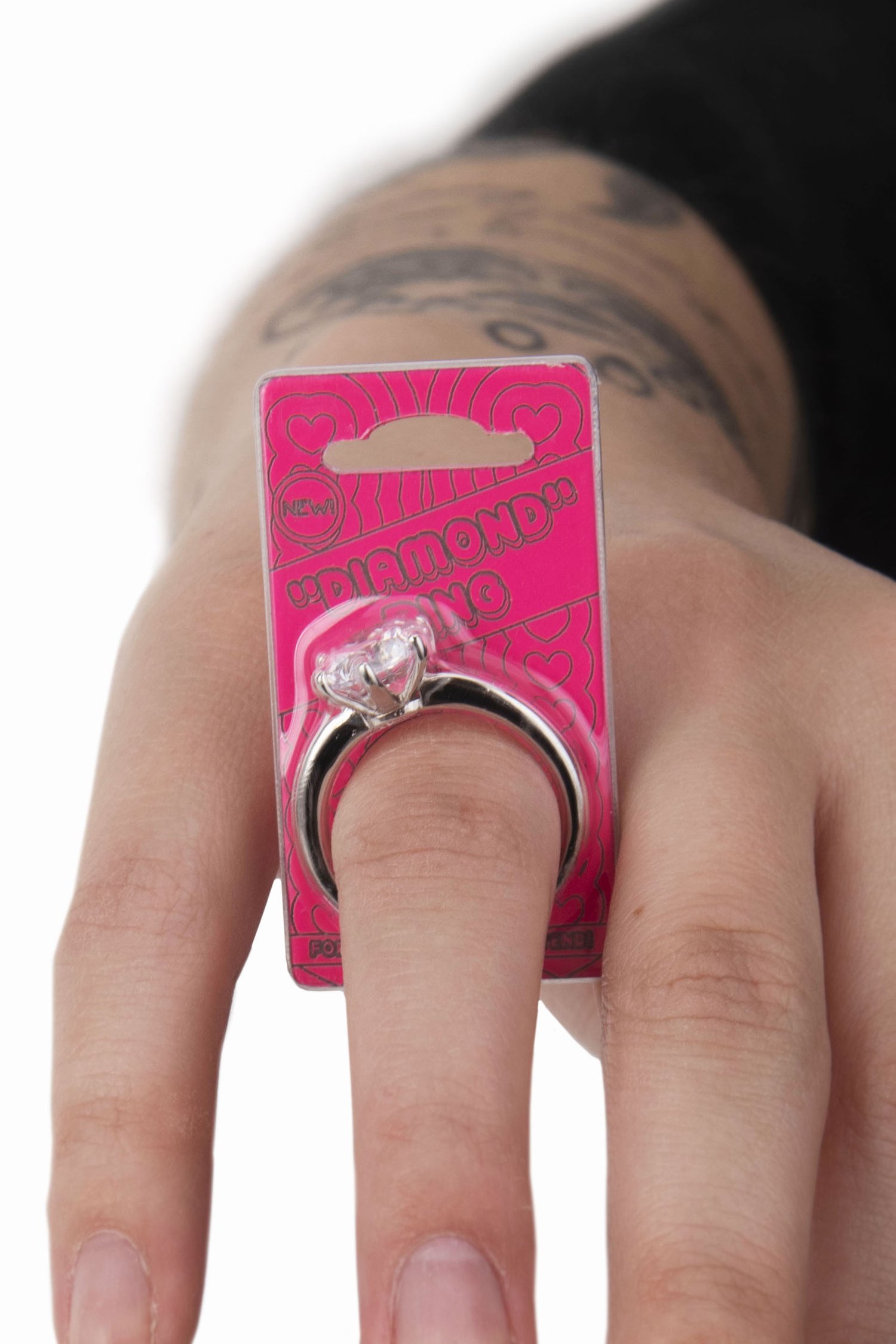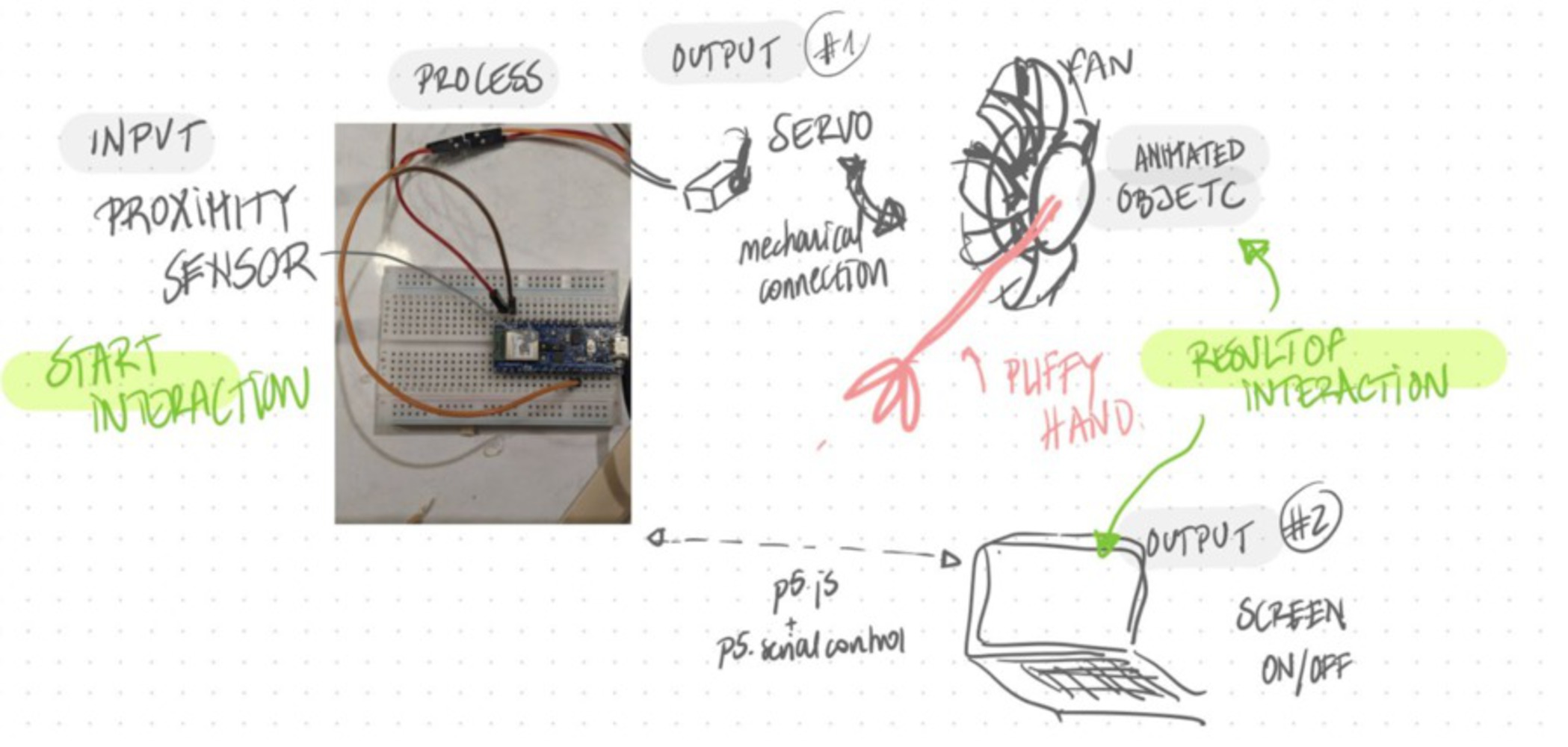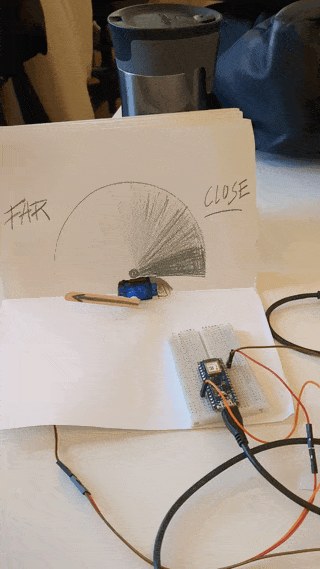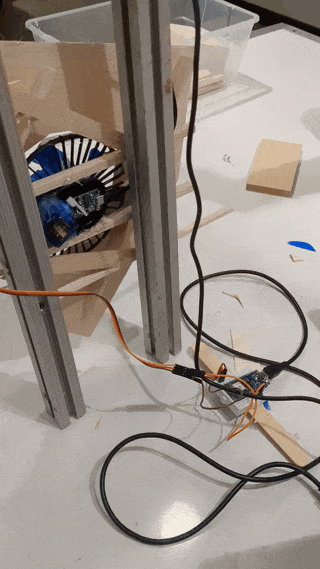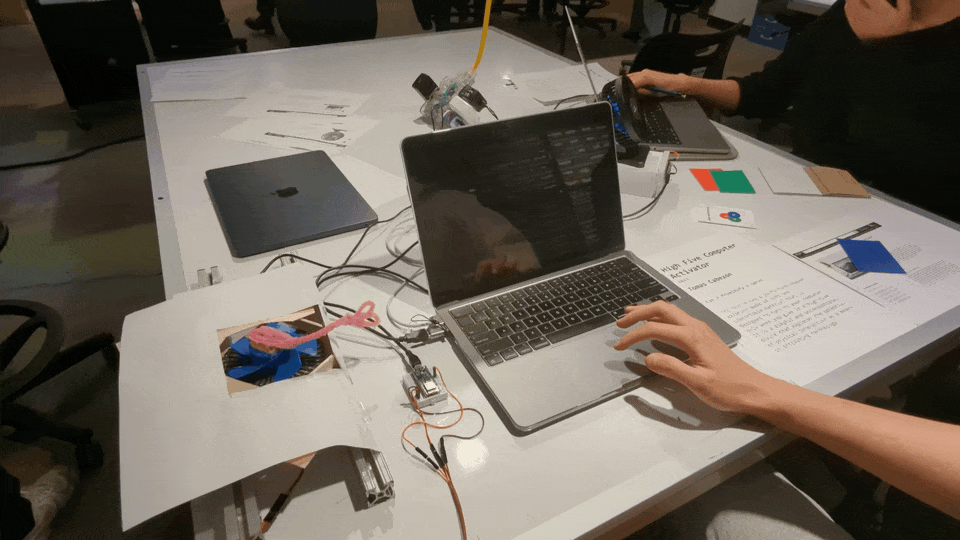Intention
What is the first thing you do when you see a friend? A high five! Why don’t we do the same with our computers? Aren’t they our best friends?
The Puffy Hand Computer Activator project responds to the initial brief by engaging with the line of inquiry around spooky technologies and exploring the potential of everyday analog technology imbued with intelligence. By subverting the conventional function of an appliance, a fan, and integrating the sensor information into a playful and unconventional device, the project creates a novel and animistic interaction. The puffy hand exterior, coupled with the fan and servo components, imbues the device with a sense of magic and agency, inviting users to engage with technology in new and unexpected ways. By exploring the potential of physical interaction as a means of activating technology, the project challenges our assumptions about the role of technology in our lives and invites us to imagine new possibilities for how we might interact with intelligent devices.
Asking chatGPT about a high five:
